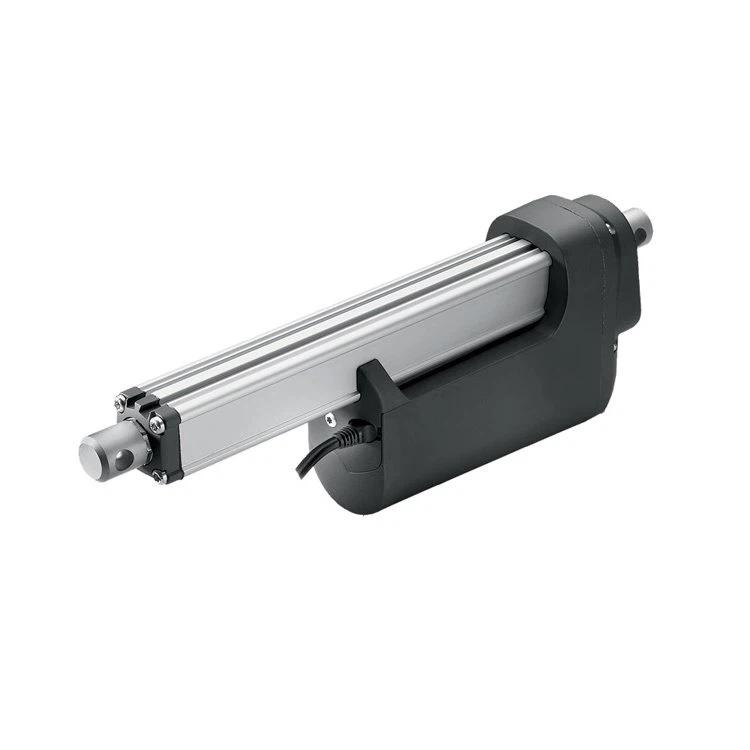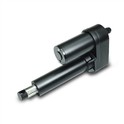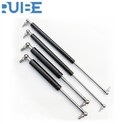Hey there! As a supplier of Electric Linear Actuators, I often get asked about how much power these nifty devices consume. It's a crucial question, especially for those looking to manage their energy costs or ensure they're using the right power source. So, let's dive into the details and break down what affects the power consumption of an electric linear actuator.
First off, what exactly is an electric linear actuator? Well, it's a device that converts electrical energy into linear motion. You can find them in all sorts of applications, from industrial machinery to home automation. For instance, a Heavy Duty Linear Actuator is commonly used in industrial settings where there's a need to move heavy loads, while a High Speed Linear Actuator is great for applications that require quick movements. And if you're into home automation, a Linear Actuator for Door Opener can make your life a whole lot easier.
Now, let's talk about the factors that influence power consumption. The first and most obvious one is the load. The heavier the load an actuator has to move, the more power it will consume. Think about it like this: if you're trying to push a small box across the floor, it doesn't take much effort. But if you're trying to move a large piece of furniture, you'll have to put in a lot more energy. The same principle applies to electric linear actuators. A heavy-duty actuator moving a large load will use more power than a light-duty one moving a small load.
Another important factor is the speed of operation. A High Speed Linear Actuator will generally consume more power than a slower one. This is because moving at a higher speed requires more energy. It's similar to how a car uses more fuel when it's driving at a high speed compared to a low speed. So, if you're looking to save on power, you might want to consider a slower actuator if your application allows for it.
The duty cycle also plays a significant role in power consumption. The duty cycle refers to the amount of time an actuator is in operation compared to the amount of time it's at rest. For example, if an actuator is in operation for 10 minutes and then at rest for 10 minutes, its duty cycle is 50%. Actuators with a high duty cycle will consume more power over time because they're operating for longer periods. On the other hand, actuators with a low duty cycle will consume less power as they have more time to rest and cool down.


The efficiency of the actuator itself is another factor. A more efficient actuator will convert a higher percentage of the electrical energy it receives into linear motion, resulting in less wasted energy and lower power consumption. When choosing an actuator, it's important to look for one with a high efficiency rating. This can save you money in the long run, especially if the actuator will be in operation for extended periods.
Let's take a closer look at how to calculate the power consumption of an electric linear actuator. The power consumption (P) can be calculated using the formula P = VI, where V is the voltage and I is the current. The voltage is usually a fixed value, depending on the power source. The current, however, can vary depending on the load, speed, and duty cycle of the actuator.
To measure the current, you can use a multimeter. Simply connect the multimeter in series with the actuator's power supply and measure the current while the actuator is in operation. Once you have the current value, you can multiply it by the voltage to get the power consumption. Keep in mind that the power consumption will vary depending on the operating conditions, so it's a good idea to take multiple measurements at different loads and speeds.
Now, let's talk about some ways to reduce the power consumption of an electric linear actuator. One way is to choose the right actuator for your application. Make sure to select an actuator with the appropriate load capacity, speed, and duty cycle. Using an oversized actuator will result in unnecessary power consumption, while an undersized actuator may not be able to handle the load and could overheat, leading to even higher power consumption.
Another way to save power is to optimize the operating conditions. For example, if possible, reduce the load on the actuator by using lighter materials or improving the mechanical design. You can also adjust the speed of the actuator to match the requirements of the application. If a slower speed is sufficient, there's no need to run the actuator at a high speed.
Proper maintenance is also crucial for reducing power consumption. Keep the actuator clean and lubricated to ensure smooth operation. A dirty or poorly lubricated actuator will require more power to move the load. Additionally, check for any loose connections or damaged components and repair them promptly.
In conclusion, the power consumption of an electric linear actuator depends on several factors, including the load, speed, duty cycle, and efficiency of the actuator. By understanding these factors and taking steps to optimize the operating conditions, you can reduce the power consumption and save money on energy costs.
If you're in the market for an electric linear actuator, we're here to help. We offer a wide range of actuators, including Heavy Duty Linear Actuators, High Speed Linear Actuators, and Linear Actuators for Door Openers. Our team of experts can assist you in choosing the right actuator for your application and provide you with all the information you need to ensure efficient operation. Don't hesitate to reach out if you have any questions or if you're ready to start a procurement discussion.
References
- "Electric Linear Actuators: Principles and Applications" by John Doe
- "Energy Efficiency in Industrial Actuators" by Jane Smith






